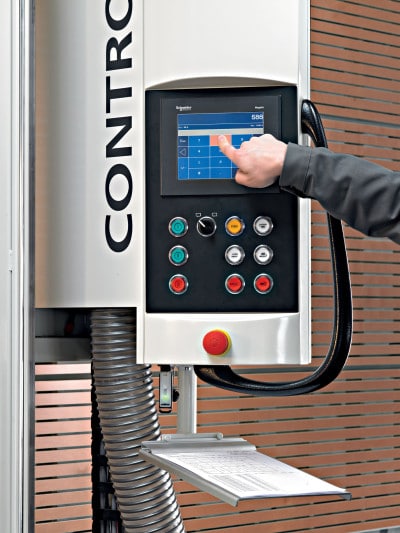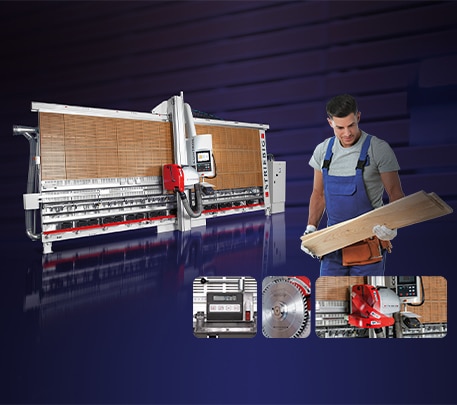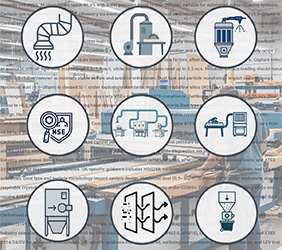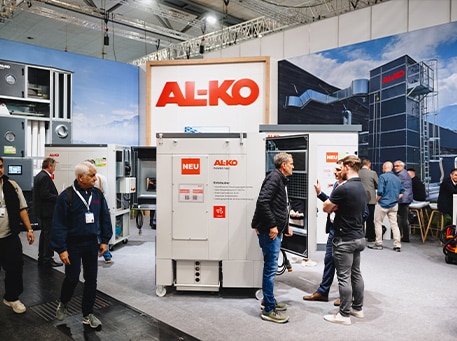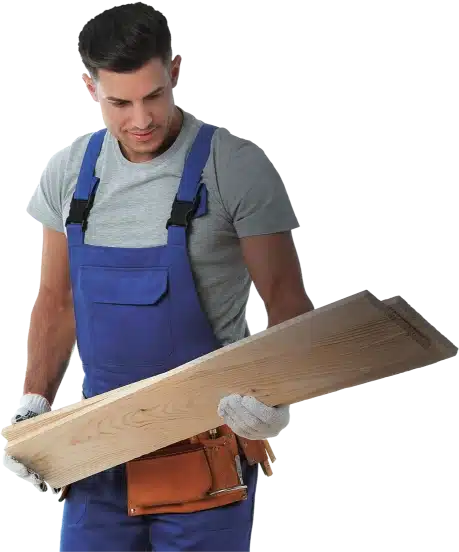Vertical or horizontal panel saws – just a question of philosophy? Choosing the right panel saw can save up to 33.000 Euro each year.
For years now, vertical and horizontal panel saws have been vying for customer preference. The issue is only clear-cut in industrial applications in which large batches of panels have to be cut. This is indisputably the domain of horizontal panel cutting centres. They are the only machines that are capable of cutting up thick stacks of panels at speed. The situation is different in all the other woodworking enterprises in which small and medium-sized batches are the norm.
Panel Saw Survey reveals the facts
Here, it is essential to make a precise comparison of the economical aspects of the various competing systems. Both the manufacturers of vertical as well as horizontal panel saws have made major efforts recently to add significant new features to their machines and to improve their cost-effectiveness. Innovative vertical panel saw specialist Striebig has taken a close look at the cost-effectiveness of vertical and horizontal panel saws in a comparative survey.
In recent years, the market for panel saws in the lower and medium-performance sector has made tremendous advances. Both systems have moved closer together. The manufacturers of vertical panel saws have unleashed a veritable firework display of innovations in the last few years to catch up with horizontal panel saw technology. On the other hand, almost all the manufacturers of horizontal panel saws have slimmed down their large installations and developed affordable entry-level models, the basic versions of which are sold at prices well below the magical 50.000 Euro limit. All the more reason for Striebig AG’s general manager Marcel Brunner to compare. The survey included all major technical and commercial aspects in its evaluation.
Striebig vertical panel saw technical advances
To avoid comparing apples with oranges, Striebig set great store in the survey on comparable performance and used the entry-level model data issued by leading manufacturers for their horizontal panel cutting centres as the basis. Where technical features and cutting performance are concerned, there is little between horizontal panel saws and Striebig’s CONTROL model. Both systems offer close dimensional adherence matched by a cutting precision of 1/10 mm and finishing-cut quality. Scoring saw units ensure clean cuts on both systems. There are practically no differences in terms of operating convenience on modern machines. Horizontal panel saws have a slight advantage in stack-cutting operation. They can cut stacks up to 200 mm thick while vertical saws are limited to 80 mm. However, maximum cutting depth is a subordinate aspect in the case of small to medium-sized batches.
For a long time, automatic panel-edge trimming was restricted to horizontal systems. With its new CONTROL model, Striebig has succeeded in catching up in this area, too, and can now offer the technology required for trimming on four sides without the need for turning. Automatic feed speeds can also be adjusted to suit the material on most vertical systems as with Striebig’s CONTROL model.
In summary, it can be said that vertical panel saws and Striebig’s CONTROL model are fully comparable in terms of technical specifications. Both vertical as well as horizontal panel saws are universal all-rounders.
Key factors when purchasing panel saws
To provide a solid basis for decisions when investing in panel saws, Striebig has put together a comparison of costs between entry-level, horizontal panel saw models and Striebig’s vertical CONTROL model. It was clear to all those involved in the survey that the comparison could make no claim to completeness. Nevertheless, it provides clear key factors that should be taken into consideration when investing in a panel saw. Considerations focused on issues subsequent to making the investment – the follow-up costs incurred by the investment – as well as their direct effect on hourly rates. The data was acquired at the end of the year 2000.
Vertical panel saws = cheaper and less space
Apart from the technical specifications, the most important criteria include the actual acquisition cost of the machine and any structural prerequisites required by installation. An entry-level, horizontal panel-cutting saw involves investment costs of approximately 45.000 Euro. In contrast, a Striebig CONTROL costs just short of 32.500 Euro. The cost of any structural work has not been taken into consideration in the survey. The specific space requirements for vertical and horizontal panel saws including handling areas vary widely. A horizontal installation requires approximately 50 square metres while a vertical panel saw with the same performance needs about 27 square metres. Per square metre of workshop space, we have estimated and applied a monthly outlay of 4,50 Euro.
Vertical panel saws = less operators
With regard to operating personnel, the differences are greater. A vertical panel saw such as a Striebig CONTROL can be operated by one person with simple handling equipment even when large-sized panels are involved. In comparison, horizontal machines require two operators when positioning large-sized panels or substantial additional investment e.g. for a vacuum lifter. As a second operator is only required for positioning and moving large sized work pieces, we have based our conclusions on an average of 1.5 persons for the operation of horizontal panel saws. In order to establish and compare the variable costs per time unit, a uniform utilisation capacity of 750 hours was set as standard for both machines.
Fixed costs largely unaffected
Companies must allow for annual fixed costs of approximately l0.478 Euro for horizontal panel saws. Apart from 6.428,50 Euro for depreciation, this also involves the interest paid on the investment of 6% and workspace costs of 2.700 Euro.
With an annual figure of 7.075 Euro, the fixed costs incurred by a Striebig CONTROL are approximately one third lower. In this case, around 4.642,50 Euro must be paid for depreciation and 975 Euro for interest payments. In addition, the annual workspace costs of 1.458 Euro for a vertical panel saw are substantially lower than is the case with a horizontal machine.
Given an annual operating time of 750 hours, hourly fixed costs of 13,97 Euro for a horizontal saw and 9,43 Euro for a vertical panel saw must be allowed for. When all the variable costs for energy, tools, maintenance, wages and residual overheads are added, this results in variable hourly costs of 113,50 Euro for a horizontal panel saw. A vertical CONTROL panel saw incurs costs amounting to 73,83 Euro.
Striebig = A solid investment in the future
The differences in the hourly production cost rates are clear. With an hourly rate of 83,26 Euro (fixed costs of 9,43 Euro + variable costs of 73,83 Euro), the use of a vertical Striebig panel saw is reflected in cost estimates. In contrast the hourly rate of a horizontal machine is considerably higher at 127,47 Euro (fixed costs of 13,97 Euro + variable costs of 113,50 Euro). Expressed as a percentage, this means: a Striebig CONTROL vertical panel saw involves costs that are around 35% lower than those of entry-level, horizontal panel cutting centres of the same performance. In actual figures, this means: a Striebig CONTROL costs 44,21 Euro less to operate per hour than its horizontal competitor. For an annual operating time of 750 hours, this results in a figure of no less than 33.157,50 Euro.
This comparison cannot be considered absolute in this general form, as piece-rates have not been identified and compared exactly. However, particularly in the case of smaller and medium-sized companies that do not specialise in the production of large batches, the comparison of hourly rates on machines of similar performance provides important pointers for a solid and profitable investment in the future.
Author Horst Wellmann, Dipl.-Ing.
Technical writer
For further information contact Matt Pearce, Sales Director on 0116 271 7155 or email sales@tmservices.co.uk
Issued by Stephen Barry Publicity. Tel: 020 8341 6660. Email: stephenbarry@clara.co.uk
